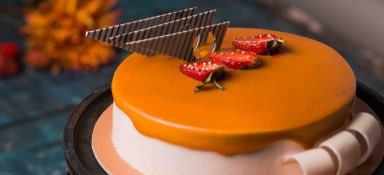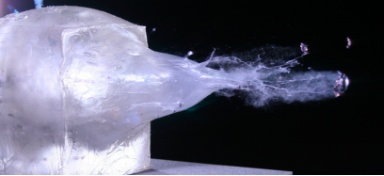
What Is Gelatin Bloom Strength?
In 1925, Oscar T. Bloom, an American scientist, invented the Bloom Gelometer, an instrument used to measure the rigidity of gelatin or gelatin film. This measurement is referred to as “bloom strength.” Even though the Gelometer is no longer in use, the term persists.
The gelatin bloom number indicates the firmness or softness of a specific type of gelatin and is mainly related to its viscosity. Gelatin viscosity determines the texture and creaminess of the final product.
The bloom strength of gelatin can range from 30 to 325 — with 30 being the softest and 325 being the stiffest. Bloom strength ranges tend to fall into three categories.
1. Low Bloom Gelatin
Low bloom gelatin falls between the range of 50–125. Lower bloom gelatin comes from the early stages of the gelatin-making process. Since little time goes into making it, low bloom gelatin is very soft.
2. Medium Bloom Gelatin
Medium bloom gelatins range between 175–225 in bloom strength. Gelatins in this range are often used for food. For example, gelatin with a bloom of 225 can be found in frosting, whipped cream stabilizers, marshmallows and canned ham.
3. High Bloom Gelatin
High bloom gelatin ranges from 225–325 and is made from cow or pig collagen. It can be formulated to create a firm transparent gel. High bloom gelatin is most often used in gelatin desserts, jelly fillings, cream fillings, jellied meat products, soft gelatin capsules and ballistic gelatin.
Category Types of Gelatin Bloom
Obtaining a specific gelatin bloom strength or viscosity is based on the raw materials used and how they are processed. Gelatin is transformed into Collagen through hydrolysis using either an acid or alkaline process.
Type A
Type A gelatin is created by treating collagen with acid. It is derived from pig skin, fish skin/scales, beef hides or beef bones and is typically used in food-grade products. It has a lower viscosity but higher bloom than Type B.
Type B
This type of gelatin is manufactured using a high-pH treatment and is also derived from pig skin, fish skin/scales, beef hides or beef bones. Type B alkaline gelatine is generally for industrial uses. It has a higher viscosity and lower bloom strength.
How Gelatin Bloom Strength Affects Price
As discussed earlier, the higher the bloom strength, the firmer the gelatin will be. Another thing to keep in mind is that as the bloom strength number goes up, so does the price. This is because there are more steps involved in making gelatin with a higher bloom strength.
If we’re looking at a 10-step development process, lower bloom gelatins can typically be completed by step five. Fewer steps result in lower costs. But if you need a higher gelatin bloom number, you will have to pay a little more since it’s the end product of a much longer process.
Find the Right Gelatin for
Your Needs at Custom Collagen
No matter what gelatin bloom strength you need for nutritional supplements, food items, medical applications or even ballistic uses, Custom Collagen has you covered. We offer a wide variety of trademarked gelatins for many different purposes. We can even customize the form, packaging and bloom strength of gelatin as needed. If you have any questions about ordering commercial gelatin, contact us today.



